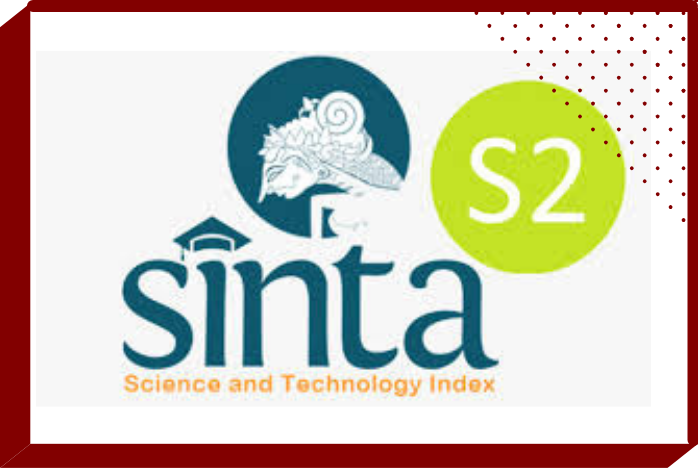Ekologi Toponimi: Pengaruh Lingkungan terhadap Penamaan Desa di Kecamatan Larangan
 Abstract views: 83
,
Abstract views: 83
,
 PDF downloads: 62
PDF downloads: 62
Abstract
This research is motivated by the low level of knowledge of the people in the villages in Larangan District about the history and reasons behind the naming of their residential areas. Residents in the area generally only know the name of their village, but do not understand the history or origin of the naming. Therefore, this study aims to describe the ecology of toponymy from three perspectives, namely the manifestation aspect, the societal aspect, and the cultural aspect. This study uses a qualitative descriptive method, with data collection techniques through observation, interviews, and documentation. The results of this study reveal the ecology of toponymy based on environmental influences in the naming of villages in Larangan District. There are three villages, namely Montok Village, Trasak Village, and Peltong Village, which are included in the manifestation aspect category. Panaguan Village and Duko Village are included in the societal toponymy aspect, while Kaduara Barat Village, Taraban Village, and Grujugan Village are included in the cultural toponymy aspect.
Downloads
References
Afandi, I., & Juanda. (2024). Toponimi Nama Jalan di Kelurahan Sasi, Kecamatan Kota Kefamenanu, Timor Tengah Utara, Nusa Tenggara Timur (Studi Etnolinguistik). GHANCARAN: Jurnal Pendidikan Bahasa Dan Sastra Indonesia, 6(1), 180–192.
Albaburrahim, A., & Alatas, M. A. (2021). Analisis Implikatur Percakapan pada Pedagang Jamu di Pasar Tradisional Prenduan, Madura. GHANCARAN: Jurnal Pendidikan Bahasa Dan Sastra Indonesia, 3(1), 39–52.
Hasna, F. (2021). Toponimi Desa di Kabupaten Bungo.
Hilmy, A. M., & Savitri, A. D. (2023). Penamaan Desa Di Kabupaten Banyuwangi: Kajian Toponimi. Sapala, 10(1), 46–55.
Lafamane, F. (2018). Hubungan Budaya dan Pengajaran Bahasa. 24.
Moleong, L. J. (2018). Metodologi Penelitian Kualitatif. Remaja Rosda Karya.
Muhidin, R. (2021). Pemberian Nama Desa atau Kampung di Kabupaten Musi Rawas : Suatu Kajian Toponimi Daratan. Prosiding Seminar Nasional Linguistik Dan Sastra (SEMANTIKS), 563–576.
Murdiati, E. (2015). Pengetahuan Ekologi Lokal. Wardah, 16(2), 155–165.
Puteri, H. A. J., Astiti Laksmi, N. K. P., Zuraidah, Z., & Prihatmoko, H. (2023). Dinamika ekologi manusia dalam toponimi Subak Gede Pulagan-Kumba. Sejarah dan Budaya: Jurnal Sejarah, Budaya, dan Pengajarannya, 17(2), 198.
Rizal. (2022). Toponimi Nama-nama Kelurahan di Kecamatan Ternate Tengah Kota Kota Ternate (Kajian Antropolinguistik).
Sibarani, R. (2015). Pendekatan Antropolinguistik Terhadap Kajian Tradisi Lisan.
Sudaryat, Y., Gunardi, G., & Hadiansah, D. (2009). Toponimi Jawa Barat (Berdasarkan Cerita Rakyat). 311.
Sugiono. (2015). Metode Penelitian Kuantitatif, Kualitatif dan R&D (22nd ed.). Alfabeta.
Sulistyawati, A. (2020). Toponimi Nama-Nama Desa di Kecamatan Bandar Kabupaten. STKIP Pacitan, 1–12.
Sultoni, A. (2023). Kearifan Ekologis dalam Cerita Rakyat Banyumas dan Pemanfaatannya untuk Pengembangan Buku Teks Kritik Sastra di Perguruan Tinggi.
Wijaya, U. H. (2020). Analisis Data Kualitatif Teori Konsep dalam Penenlitian Pendidikan.
Copyright (c) 2024 GHANCARAN: Jurnal Pendidikan Bahasa dan Sastra Indonesia

This work is licensed under a Creative Commons Attribution-ShareAlike 4.0 International License.
Ghancaran: Jurnal Pendidikan Bahasa dan Sastra Indonesia uses an Open Access Policy under the Creative Commons Attribution-ShareAlike 4.0 International License. Authors publishing in this journal agree to the following terms:
- Ghancaran Journal holds the copyright and grants the journal rights for first publication with the work simultaneously licensed under a

The work is distributed under Creative Commons Attribution-ShareAlike 4.0 International License which allows others to share, copy, and redistribute the material in any media or format and adapt, remix, change, and develop the material even for commercial purposes, as long as it is stated credit and license derivative works under similar terms. - Authors may make additional contractual arrangements for non-exclusive distribution of the journal's published work version.
- Authors are permitted to post their work online (e.g., in institutional repositories or on their websites) before and during submission, as doing so may lead to productive exchange.


















